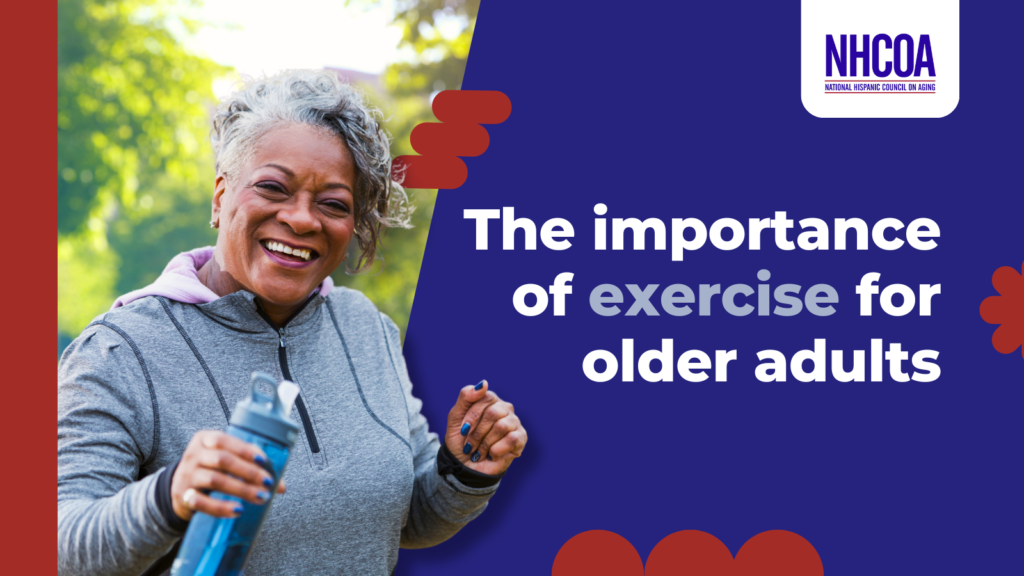
We have previously talked about proper nutrition for older adults. We know that good nutrition is the foundation for a healthy life but it is also important to have a good exercise routine that complements good dietary practices. Regular physical activity helps prevent or delay many health problems that develop over time. It also helps strengthen your muscles so you can do your daily tasks without having to rely on others.
It is important to note that some chronic conditions can affect an older adult’s ability to meet these recommendations. Older adults should be as physically active as their abilities and conditions allow.
The Center for Disease Control and Prevention (CDC) recommends in its publication of the second edition of the Physical Activity Guidelines for Americans a series of physical activities according to different ages. In the case of older adults, it proposes the following:
● At least 150 minutes a week of moderate-intensity activity, such as brisk walking.
● At least two days a week of muscle-strengthening activities.
● Activities to improve balance, such as standing on one foot.
For older adults with chronic conditions or disabilities, it suggests physical activity at a lower intensity:
● Perform at least 150 minutes (e.g., 30 minutes a day, five days a week) of moderate-intensity aerobic physical activity per week.
● Perform muscle-strengthening activities that include all major muscle groups at least two days a week.
Some of the most common changes in aging people are those that occur in terms of muscle mass, fat and the body’s water composition, which are not always visible. However, they are very important in determining the level of dependency in older adults.
For muscle mass in older adults, the loss can be up to 40%. Regarding fat, there is a proportional increase to the decrease in muscle mass. Finally, body water in a person throughout their life reaches 70%, but from the ages of 65 and older it can decrease up to 50%. This can result in greater difficulty in performing motor functions, increased likelihood of becoming dehydrated and reduced resistance to exercise. Due to these changes, there are problems in maintaining body temperature and an alteration in the metabolism of older adults.
Older adults should include physical activity in their daily routines according to their abilities. Continued exercise will improve functionality and independence, as well as benefit your mood and quality of life. Their family, caregivers, and friends will play a key role in this routine in order to maintain it over time.
Regular physical activity is one of the most important things people can do to improve their general health. Moving more and sitting less has enormous benefits for everyone, regardless of age, gender, race, ethnicity or current fitness level.
References:
https://www.cdc.gov/physicalactivity/basics/age-chart.html
https://www.scielo.org.mx/scielo.php?script=sci_arttext&pid=S0016-38132004000400013

Recent Comments